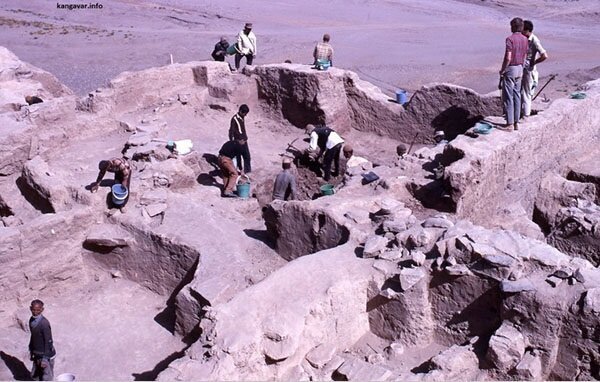INSUBCONTINENT EXCLUSIVE:
TEHRAN - Iranian archaeologist Morteza Geravand has stressed the untapped capacity of Godin Tepe, an ancient settlement dating back to 5,000
BC, as a considerable cultural and tourist destination.Situated in Kangavar Valley in between Hamadan and Kermanshah, this archaeological
site has been mainly overlooked for almost six decades, regardless of its importance in Iran's archaeological heritage.Speaking to local
media, Geravand, who likewise heads the Anahita Temple National Base, highlighted Godin Tepes function as a significant trade hub in ancient
This website was located along a key commercial route, working as a trading post for exchanges in between Mesopotamia and even southern
Iran, he explained.Excavations at Godin Tepe have actually exposed evidence of human occupation from ancient durations through the Islamic
During the Median period, a fortress was constructed at the site, likely serving as an administrative or military
In spite of its historical significance, Geravand expressed concern over the sites existing state, keeping in mind that while other ancient
sites from the exact same era, such as Tepe Sialk in Kashan, Nushijan in Malayer, and Hasanlu in West Azarbaijan province, have actually
been developed into research and tourist centers, Godin Tepe has actually been left unattended.The website was excavated by a Canadian
archaeological team nearly 60 years earlier
Ever since, no further excavations have actually happened, and a lot of the structures uncovered at that time have actually weakened
Recent efforts have been made to define the sites boundaries, however moneying restrictions have actually impeded preservation work.Geravand
estimated that an initial budget of around one billion tomans (some $11,000) is required for site conservation and analysis, with additional
investments needed for its full advancement as a research and tourism hub
He worried that with sufficient support, Godin Tepe might become a significant cultural tourist attraction, bringing economic advantages to
the underdeveloped eastern area of Kermanshah province.While Kermanshah is understood for [cherished] sites like [the UNESCO-registered]
Bisotun and Taq-e Bostan, numerous important historical landmarks in the eastern part of the province stay underappreciated, he noted,
requiring greater attention to the areas cultural heritage.Godin Tepe, also known as Tappeh Imamzadeh, is located near the town of Godin in
It was signed up on Iran's National Heritage List in 1965
Supporters like Geravand hope that with further financial investment and acknowledgment, it may one day get UNESCO World Heritage status,
putting it among Iran's most valued archaeological sites
Godin Tepe is worthy of getting a UNESCO status, the archaeologist revealed in October 2023
The significant occupation periods at Godin have been categorized as Periods XI-VI (c
5200-3800 BC); Period VI: phases 3-1 (c
3800-3000 BC) (note that Period VI:1 was called Period V in early reports of the website); Period IV: stages 2-1 (c
2800-2600 BC); Period III: stages 6-1 (2600-1400 BC); and Period II: stages 2-1 (c
According to World History Encyclopedia, the website was a Sumerian settlement first lived in c
5000 BC, which comprised a town and a fortress
It became an essential stop along the Great Khorasan Road trade path, better known as the Silk Road, which was the significant opportunity
for trade for near to 3,000 years
(The term Silk Road was very first coined in 1877 by the German geographer Baron Ferdinand von Richthofen in reference to the trade of

